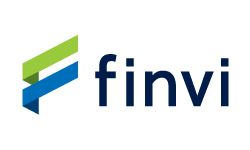Source: site

United States household debt continued its steady climb in the third quarter of 2025, reaching a record $18.59 trillion, according to the Federal Reserve Bank of New York’s latest Household Debt and Credit Report.
The data, drawn from the New York Fed’s Consumer Credit Panel, highlighted a $197 billion increase from the previous quarter, with mortgage balances accounting for the lion’s share of the growth.
Mortgage balances rose by $137 billion to $13.07 trillion, while new mortgage originations ticked up to $512 billion for the quarter.
“Household debt balances are growing at a moderate pace, with delinquency rates stabilizing,” Donghoon Lee, economic research advisor at the New York Fed, said.
“The relatively low mortgage delinquency rates reflect the housing market’s resilience, driven by ample home equity and tight underwriting standards,” Lee said.
Credit card balances also hit a new high, climbing $24 billion to $1.23 trillion, while auto loan balances held steady at $1.66 trillion. Home equity line of credit (HELOC) balances increased by $11 billion to $422 billion, and student loan balances rose $15 billion to $1.65 trillion. Non-housing balances overall grew by 1% from the previous quarter.
Delinquency rates remained elevated but largely stable, with 4.5% of outstanding debt in some stage of delinquency—levels not seen since early 2020, but still well below the 11% peak during the 2009 financial crisis.
Notably, transitions into serious delinquency (90 days or more past due) increased for most debt types, but mortgages saw a slight decrease, underscoring the sector’s relative strength.
Younger borrowers, however, faced mounting pressure. The rate of serious delinquency among those aged 18 to 29 doubled from a year earlier, driven in part by missed student loan payments.
Student loan delinquencies spiked to 9.4% in Q3, up from 7.8% at the start of the year, as previously paused federal loan payments began appearing on credit reports.
While debt balances continue to rise, most borrowers remain on track with payments. Analysts point to a “K-shaped” recovery, where higher-income households continue to build wealth while those at the lower end struggle with late payments and rising balances.
“While there is some distress at the household level… the macro picture is fairly bright,” Ted Rossman, senior industry analyst at Bankrate, said.
Still, the divide is growing. The share of higher-risk, subprime borrowers has reached levels not seen since 2019, while super-prime borrowers are also on the rise, according to TransUnion.
“As consumers increasingly shift toward the extremes of the credit risk spectrum, it’s no surprise we’re seeing the sharpest growth in credit card and auto activity within those tiers,” Michele Raneri, vice president at TransUnion, said.
Stay updated with the freshest mortgage news. Get exclusive interviews, breaking news, and industry events in your inbox, and always be the first to know by subscribing to our FREE daily newsletter.




